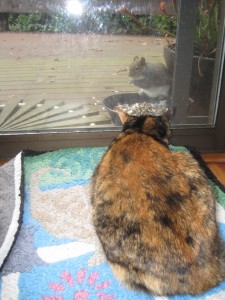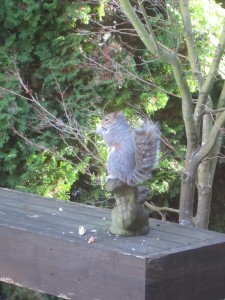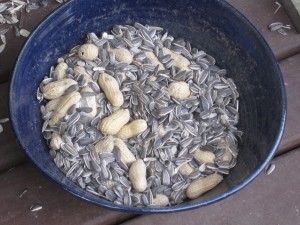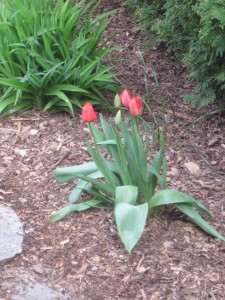Like many gardeners, we provide a couple of bird feeders in our yard. Along with the desirable birds, we get less desirable visitors like pigeons and squirrels. Having tried (and failed) to make our system squirrel-proof, I finally decided to wave the white flag and embrace our furry visitors with their own bowl of treats – raw peanuts and sunflower seeds in the shell. We put this on our deck next to the sliding door so our cats can enjoy the show.
 Cat TV is very popular viewing at our house.
Cat TV is very popular viewing at our house.
A completely unexpected benefit of Cat TV is that the squirrels no longer dig up my bulbs and gnaw at them. Nor do they destroy my tulip buds. In fact, for the first time ever my tulips are intact and gorgeous.
Now if I could come up with something for the pigeons…


